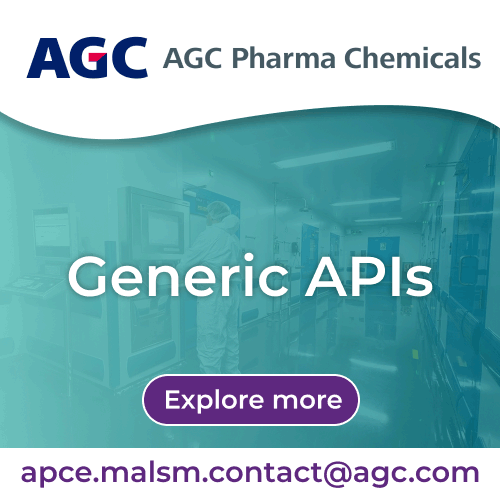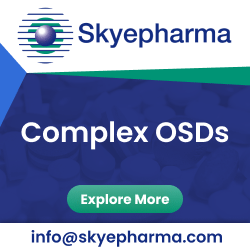Overview of analytical testing services for respiratory & inhalation products for nasal drug delivery offered by pharmaceutical service providers.
Q1. How are inhalation products tested?
Nasal drug products are most commonly used to treat respiratory ailments such as asthma, chronic bronchitis, emphysema, and bronchiectasis. Pharmaceutical inhalation preparations or nasal drug products are generally formulated as nasal spray & inhalation solutions, suspensions, and powders.
These solution, suspension, and powder formulations are delivered to the respiratory tract via nasal drug delivery devices like dry powder inhalers (DPI), metered dose inhalers (MDI), and nebulizers, amongst others.
- Nasal Spray & Inhalations Solutions: Pharmaceutical nasal spray & inhalation solutions are clear liquid preparations containing one or more active pharmaceutical ingredients (API) dissolved in a suitable medium.
- Inhalation Suspensions: Pharmaceutical suspensions for inhalation are widely used liquid dosage forms. They may be defined as preparations containing finely divided drug particles distributed somewhat uniformly throughout a medium in which the drug exhibits a minimum degree of solubility.
- Inhalation powders: Powders are dry, free-flowing formulations of drug products, which can be used internally and externally (e.g., external applications to the skin). Dry powders can be prepared for inhalation by spray-drying or micronization of a blend consisting of the drug and a suitable inert carrier.
Inhalation product analysis and testing services include droplet size and particle characterization, delivered dose testing and aerodynamic particle size analysis for pressurized metered dose inhalers (pMDI), dry powder inhalers (DPI), nebulizers or soft mist inhalers, stability testing, foreign particulate matter testing, etc.
Performing inhalation product development & performance testing on nasal drug products, which are delivered via oral inhalation or nasal routes, can be especially challenging given the complex drug-device combination relationship and the advanced techniques which are required. It takes not only the right equipment but also the right analytical team to ensure success.
Inhaler testing equipment, nasal device testing equipment, nasal spray testing equipment and aerosol testing equipment, amongst copious others, enable drug product testing of inhalation and respiratory products. Some of these are explored below.
Inhaler Testing Equipment
- To measure Delivered Dose Uniformity (DDU)
- To measure Aerodynamic Particle Size Distribution (ASPD)
- Ancillary inhaler testing equipment
Nasal Device Testing Equipment
- Spray nasal device testing equipment
- Spray content uniformity nasal device testing equipment
Aerosol Testing Equipment
- Spray nozzles
- Filters
- Particle size aerosol testing equipment
Nasal Spray Testing Equipment
- To measure spray Droplet Size Distribution (DSD)
- Spray measuring equipment
- Plume geometry and spray pattern nasal spray testing equipment
Q2. What are nasal drug product analysis services?
Nasal drug product or inhalation product analysis and testing help in optimising performance and quality through inhalation drug product development services including product characterisation, in-vitro bioequivalence studies and stability contract services.
Some nasal drug product analysis services, include, but are not limited to:
- Materials Inhalation Product Analysis and Testing
In inhalation drug product development services, testing of raw materials ensures that any components to be used in the production and manufacture of inhalation and respiratory products are suitable for nasal drug delivery. Conducting raw materials analysis using the appropriate test and compendial methods can prevent costly problems and delays during later stages of production.
- Extractables and Leachables Inhalation Product Analysis and Testing
Extractables and leachables (E&L) investigation should be conducted to guarantee that the pharmaceutical packaging system is safe and does not negatively influence the drug product, prior to commercialization.
-
Extractables Nasal Drug Product Analysis Services: Organic and inorganic chemical species that can be released from the surfaces of components used in the manufacture and storage of inhalation and respiratory products under laboratory conditions (accelerated or exaggerated temperatures, solvents or surface exposure). Extractables studies are performed on the components of a packaging system to achieve various goals.
-
Leachables Nasal Drug Product Analysis Services: Leachables are chemical species that make their way into the product under normal product, application or storage conditions (unlike the laboratory conditions noted above, for extractables). Forced or accelerated leachable studies can be performed to assess leachables that migrate under simulated environmental conditions by analyzing the drug formulation after exposure to elevated temperature.
- Shelf Life Studies
Before commencing inhalation drug product development services, a complete description of the acceptance criteria and analytical procedures with analytical sampling plans should be provided to ensure the identity, strength, quality, purity, and performance of the drug product throughout its shelf life and during the period of patient use.
A single primary stability batch of the drug product stored under long-term stability conditions should be tested for the above noted characteristics at the proposed shelf life for verification purposes.
- Transit Nasal Drug Product Analysis Services
Simulated distribution scenarios true to the expected supply chain conditions of delivery should be created to perform transit testing via drug product analysis services. These studies can estimate important aspects which may come into play during commercialization.
- Delivered Dose Uniformity Inhalation Product Analysis and Testing
Delivered dose uniformity is one of the most critical requirements for dry powder inhaler (DPI) and metered dose inhaler products. Delivered dose uniformity is a Critical Quality Attribute (CQA) for the determination of safety, quality and efficacy of orally inhaled and nasal drug products (OINDPs).
Delivered Dose Uniformity (DDU) is measured by firing the test device into a sampling apparatus which contains a filter. The active drug caught on the filter is then dissolved in solvent and analysed using High Pressure Liquid Chromatography (HPLC).
- Spray Pattern and Plume Geometry Analysis
Spray pattern and plume geometry analysis is used for characterization of many types of spray drug products, including: medical devices such as nasal devices, paint, fuel injectors and domestic aerosols. Spray pattern and plume geometry analysis services are explored in detail in the subsequent question.
Q3. How are plume geometry and spray patterns from dry powder devices evaluated?
Formulations for inhalation routes of administration include both solid and liquid dosage forms. Inhalation solid dosage forms consist of dry powders and are delivered to the respiratory system through dry powder inhalers (DPI), rotahalers, spacers, etc. Plume geometry and spray pattern from dry powder devices and metered dose devices are calculated via spray pattern and plume geometry measurement systems.
Spray pattern and plume geometry analysis and characterisation during development is a regulatory requirement for metered dose inhalers, dry powder inhalers and other unit dose nasal spray drug products. Plume geometry and spray pattern from dry powder devices is also required for release testing.
Spray pattern and plume geometry measurement systems are designed to provide an automatic, objective measurement of the shape, size and duration of the spray from spray drug products or devices. Plume geometry and spray patterns are defined below.
- Plume Geometry
Plume geometry is characterised by the spray angle and plume width. Spray angle is the angle of the emitted plume measured from the vertex of the spray cone and spray nozzle. Plume width is the width of the plume at a given distance (e.g. 3 cm) from the spray nozzle.
- Spray Pattern
A spray pattern refers to the shape of a fluid that is released from a pressurized source. Spray patterns determine the degree of evenness with which a protective fluid coating is applied to a surface. A good spray pattern ensures better corrosion prevention.
The formulation properties (viscosity, surface tension and density) and automated actuation parameters (velocity, stroke length, force and acceleration) affect the plume and spray characteristics of unit dose nasal spray devices. Spray pattern measurement systems and plume geometry measurement instrumentations are used for characterization of many types of spray products including: medical devices such as nasal devices, dry powder devices, paint, fuel injectors and domestic aerosols.
Spray pattern and plume geometry measurement systems capture images of the spray and calculate its pattern, cone angle/plume geometry and time evolution. Optional software and hardware allow droplet size measurement and velocity measurement as well.
Various spray pattern and plume geometry measurement systems and equipment are used to measure the above defined characteristics (plume geometry and spray pattern) of metered dose and unit dose nasal spray drug products. Some spray pattern and plume geometry measurement instrumentation include the devices, noted below.
Spray Pattern & Plume Geometry Measurement Instrumentation:
- Plume Geometry Measurement Instrumentation
Plume geometry technologies are required to conduct accurate and consistent plume geometry tests of nasal and oral sprays. Plume geometry measurement instrumentation usually involves a camera setup. The stable phase for plume geometry analysis is picked from different frame rates and camera positions of the sprays plume geometry, the frame where the spray is most intense is selected.
- Spray Pattern Measurement Systems
In spray pattern measurement systems, different frame rates, camera positions, and spray durations (start and stop time) are evaluated during method development. The frame rates are varied in order to select the optimal method with minimal background noise.
The spray pattern and plume geometry analysis of a nasal powder product is a crucial step in the development and manufacture of inhalation drugs and delivery devices. And, (1) spray pattern and plume geometry measurement systems and (2) spray pattern and plume geometry measurement instrumentation are essential to assess and analyze these characteristics.
Q4. What are orally inhaled and nasal drug products or Inhaled OINDPs? How are they tested?
Already used extensively for local activity, orally inhaled and nasal drug products (OINDPs) or orally inhaled products also show great promise for the effective systemic delivery of a variety of therapeutics. Patient acceptability, rapid absorption, gastro-intestinal tract avoidance, and the opportunity for product differentiation are just some of the driving factors that led to the popularization of inhalable OINDPs.
Some of the inhaled drug products are by far the most pharmacologically effective substances that are administered to humans. However, Orally Inhaled or Nasal Drug Products (OINDP) represent the highest risk drug products in relation to the potential introduction of impurities via container closure contact.
Orally Inhaled Products and Nasal Drug Delivery Products Include:
- Metered Dose Inhalers
- Dry Powder Inhalers
- Inhalation Solutions
- Inhalation Sprays
- Nasal Sprays
Orally Inhaled and Nasal Drug Product (OINDP) Development and Testing:
Performance of orally inhaled and nasal drug products (OINDPs) or orally inhaled products is governed by complex interactions between device, formulation, and patient factors. The FDA continues to explore new methods to make orally inhaled and nasal drug products (OINDP) development and testing more cost efficient and time-effective.
The design and development of the delivery device component of inhalable OINDPs are complex, requiring the implementation of national regional and international standards to ensure compliance with increasingly rigorous regulatory requirements. Orally inhaled and nasal drug product testing and inhalation product development & performance testing are vital aspects of the development of inhalable OINDPs, as it is important to fully understand the drug product characteristics and the formulation – device relationship.
Orally inhaled and nasal drug product (OINDP) development and testing services include CMC support (NDAs/ANDAs), formulation development, GMP testing, product characterisation, stability programs, clinical manufacturing services for small molecule and biologic OINDPs, and orally inhaled and nasal drug product testing, amongst other contract services.
Various service providers offer analytical testing services such as orally inhaled and nasal drug product testing. They often have years of experience and know-how in dealing with orally inhaled and nasal drug product (OINDP) test equipment. Orally inhaled and nasal drug product (OINDP) test equipment that enables inhalation product development & performance testing are explored below.
Orally Inhaled and Nasal Drug Product (OINDP) Test Equipment:
- Extractable and leachable testing equipment
- Toxicological orally inhaled and nasal drug product (OINDP) test equipment
- Orally inhaled and nasal drug product (OINDP) test equipment for analyzing Delivered Dose Uniformity (DDU)
- In vitro analysis equipment for bioequivalence testing
Q5.Who are the leading analytical testing service providers?
Proveris Scientific
Proveris Scientific Corporation delivers innovative testing platforms, laboratory services, and deep product knowledge to customers who develop, manufacture or test orally inhaled and nasal drug products (OINDPs). They are also leaders in spray drying and aerosol product testing contract services.
Sprayview Measurement System: Proveris offers the sprayview measurement system designed to meet rigorous testing standards for orally inhaled and nasal drug products (OINDPs) along with spray pattern and plume geometry analysis of a nasal powder product . The sprayview measurement system is the industry standard for measuring and analyzing the spray pattern and plume geometry from dry powder devices, metered dose devices, aerosols, etc.
Bioindustria L.I.M. Spa
Biondustria L.I.M's Central Quality Control Laboratory is located in Novi Ligure where finished products analysis is performed. Furthermore, their Quality System has received FDA approval following an inspection of the plant and their analytical laboratories.
ZCL Chemicals Ltd
ZCL has a dedicated analytical development laboratory. Their activities include analytical method development & validation, for RM, WIP & finished products, OVI method development & method validation, impurity profile studies, etc.
Their Quality Control Lab is equipped with HPLCs, GC Units with Head space for residual solvents, UV Spectrophotometer, FTIR Spectrophotometer, Particle Size analyzer (Malvern), Polarimeter, Walk-in type Stability Chamber, Modern Microbiological Lab, etc.
AMRI
AMRI offers global end to end solutions from cGMP analytical testing services of both small and large molecules, solid-state chemistry and particle engineering, to container qualification and testing, packaging and distribution testing, medical device and drug delivery testing, extractables/leachables and impurities detection and microbiology.
AMRI also offers cGMP testing of particle properties using the following techniques: particle size analysis by laser light scattering, particle counter by light obscuration, particle morphology and size range by image analysis.
All Suppliers























